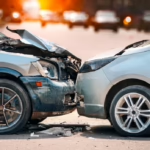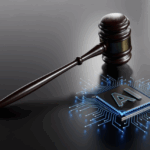Texting and driving is blamed by a majority of people as the leading cause of accidents when distracted driving comes up. While it is true that using hand-held technology while driving is a major threat to the safety of drivers on roads, personal injury lawyers (amongst others) know that there are various forms of distractions while behind the wheel that also lead to damages and fatal injuries. Amongst these distractions lies one that occurs commonly today but is hardly discussed as a serious danger: eating and driving.
Eating while driving may seem innocent, but it’s worth noting that it is still just as dangerous as texting and driving. According to an EXXON-Mobile survey that included 1,000 individuals, 70 percent of drivers admitted to eating while driving, and 80 percent admitted to drinking (non-alcoholic beverages) while driving. Nonetheless, there are people out there that don’t think eating and driving is a big deal, however, according to the National Highway Safety Organization, distracted driving accounts for about 80 percent of accidents. Eating and driving leads to three different distraction types: Visual distractions, manual distractions and cognitive distractions.
In order for you to understand how talking to people like us, personal injury lawyers, after you’ve been in an accident involving another driver eating and driving, here is the breakdown of each of those distractions.
Visual Distractions
Visual distractions occur when the driver takes their eyes off the road to eat, open a food item, or reach for things such as napkins, sauce packets or a drink. It only takes a second for tragedy to strike and visual distractions put the driver, as well as others around them, at risk. Looking away to eat is no different than looking away to text, which makes them equally as dangerous.
Manual Distractions
When a driver takes their hands off the steering wheel to take a bit, reach for more food, take a drink, or open packaging, they automatically lose some of the control they have over their vehicle. Attentiveness and reflexes work hand in hand when it comes to avoiding an auto accident and taking your hands off the wheel will drastically reduce your reaction time, which can result in the increased risk of an accident.

Cognitive Distractions
Cognitive distractions occur when a driver is no longer focused on the road. It’s crucial for drivers to be aware of their surroundings, and if you’re focusing on your meal, you aren’t going to be able to focus on the road. Personal injury lawyers can still find guilt in others that would appear as if they had their hands on the wheel at the time of the accident simply because they were still eating and driving.
Some drivers may try to dismiss this behavior by stating that they only eat when driving at low speeds or while at stoplights. However, orthopedic trauma surgeon Dr. Lisa Cannada serves accident victims every day and says that “even a crash at low speeds of 20 mph or slower can have long-lasting permanent health effects.” Along with that, even if you’re at a stoplight, eating may distract you from a direct threat in the form of another vehicle approaching your vehicle in an uncontrolled manner. Personal injury lawyers sometimes see cases where a driver was struck by another distracted driver while waiting at a light.
Distracted driving is distracted driving no matter the circumstances, and while there is no law that prohibits an individual from eating and driving, remember that the consequences can be just as severe as an accident caused by a technological distraction. If you or someone you know has been injured due to someone else’s negligence on the road, contact a personal injury lawyer here at Robert J. DeBry and Associates. We’ll help you build a strong claim and get you the compensation that you deserve for any damages, injuries and lost wages.



